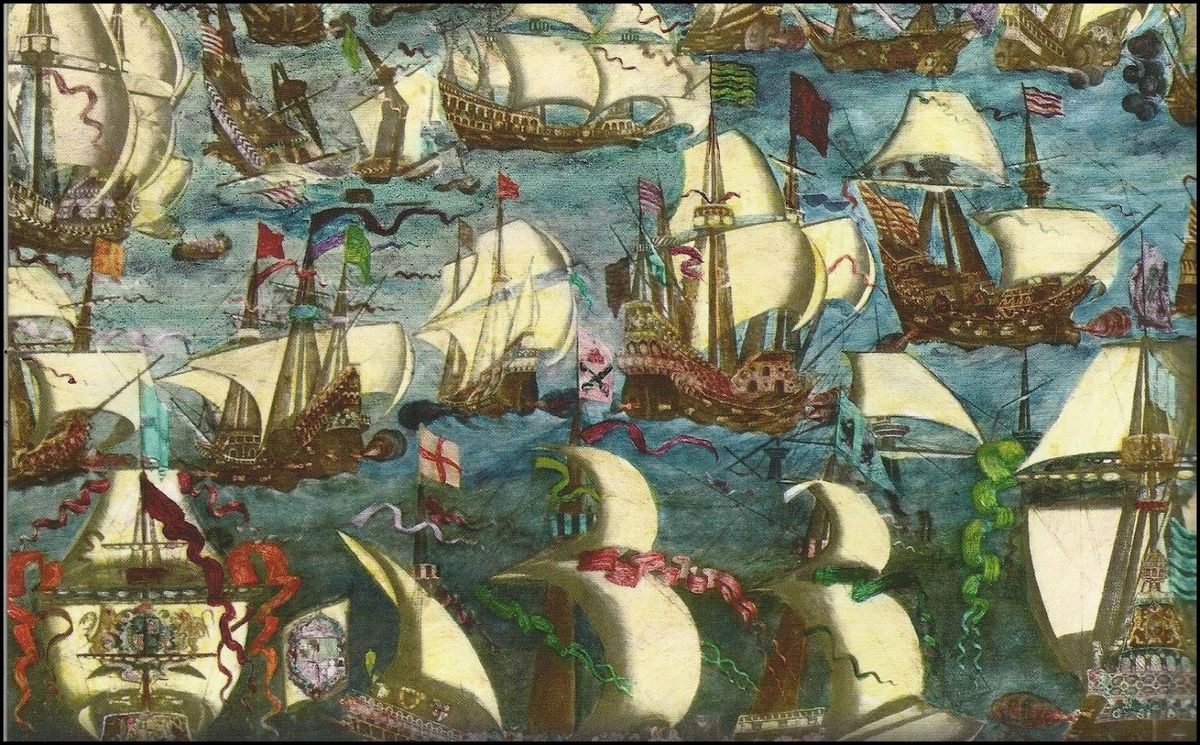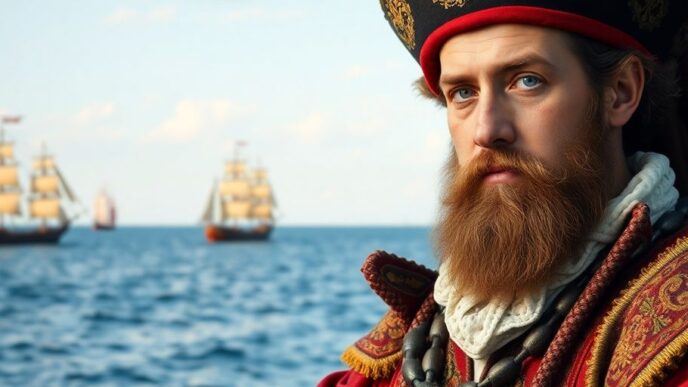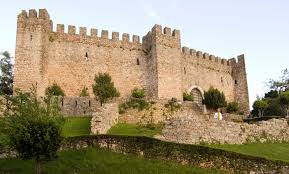The Portuguese Navy boasts a rich and storied history, marked by pivotal battles, technological advancements, and influential figures. From its early foundations to its modernization efforts, the navy has played a critical role in Portugal’s maritime dominance and colonial expansion. Here, we delve into the origins, key engagements, and transformative periods of the Portuguese Navy, highlighting its impact on global naval warfare and its evolution over the centuries.
Foundations and Early Engagements

Birth of the Portuguese Navy
Following the birth of the Portuguese Navy, a period of significant growth and strategic victories ensued. The Navy quickly became a pivotal force in protecting the burgeoning Portuguese Empire and its maritime interests. Notably, the Navy’s prowess was demonstrated under the command of figures such as Napier, who played a crucial role in the Liberal Wars, securing the throne for Queen Maria II by defeating the fleet of Dom Miguel in 1833.
The ship of the line Nossa Senhora da Conceição exemplifies the might and capabilities of the Portuguese Navy during its early years. Launched in 1701, this formidable vessel was a testament to Portugal’s shipbuilding expertise and naval power. With a complement of 700 men and an armament of 80 guns, the Nossa Senhora da Conceição was not only a symbol of national pride but also a key player in international conflicts, such as the Ottoman-Venetian War.
The Portuguese Navy’s evolution from its inception was marked by rapid advancements in naval warfare and ship design, reflecting the nation’s commitment to maritime dominance.
The Navy’s service history is punctuated with engagements that highlight its strategic importance, including the Battle of Matapan and the support of Corfu, showcasing the Navy’s role in broader geopolitical affairs.
The Era of Ship of the Line
Following the foundations of the Portuguese Navy, the era of the Ship of the Line marked a significant evolution in naval warfare. The 17th and 18th centuries witnessed the rise of these formidable vessels, characterized by their multiple gun decks and heavy firepower. The Portuguese Navy, influenced by the developments of its English and Dutch counterparts, began to integrate these ships into their fleet, enhancing their maritime capabilities.
During this period, the Ship of the Line became the backbone of naval strategy, with nations vying for control of the seas through these powerful warships. The Portuguese Navy’s adoption of the Ship of the Line was a testament to their commitment to maintaining a strong maritime presence. The table below outlines the key features of these ships:
| Feature | Description |
|---|---|
| Gun Decks | Multiple levels of artillery |
| Firepower | Equipped with up to 100 guns |
| Size | Large vessels capable of dominating sea battles |
The dominance of the Ship of the Line in naval warfare was not only a reflection of a nation’s military might but also a symbol of its geopolitical influence.
As the era progressed, the design and construction of Ships of the Line continued to evolve, with innovations in hull design and armament leading to even more formidable vessels. The Portuguese Navy, along with the major naval powers of the time, played a pivotal role in shaping the tactics and outcomes of naval engagements during this transformative period in maritime history.
Key Naval Battles and Engagements
The Portuguese Navy’s history is marked by the influence of foreign naval officers who brought with them expertise and tactics from other maritime powers. This cross-pollination of naval knowledge significantly enhanced the strategic and operational capabilities of the Portuguese fleet.
The collaboration with foreign officers often led to the adoption of new ship designs, improved navigation techniques, and advanced battle strategies. These contributions were pivotal in maintaining the Portuguese Navy’s competitive edge during periods of intense naval rivalry and warfare.
The integration of foreign naval expertise was a cornerstone in the evolution of the Portuguese Navy, reflecting a broader understanding of naval warfare and defense.
Foreign officers, hailing from countries with strong naval traditions, such as the British Royal Navy, provided valuable insights that were instrumental in several key victories. Their involvement exemplified the dynamic and adaptive nature of the Portuguese Navy throughout its history.
Influence of Foreign Naval Officers
The Portuguese Navy’s history is marked by the influence of foreign naval officers who brought expertise and experience from other prominent navies. Notably, British officers played a significant role in shaping naval strategies and tactics. One such figure was Sir Charles Napier, a British admiral who served with distinction in various naval engagements and later influenced maritime operations in Portugal.
Foreign expertise was not limited to individual contributions but also included the adoption of naval technologies and practices that were prevalent in more advanced fleets. This cross-pollination of ideas and skills was crucial in the evolution of the Portuguese Navy, particularly during periods of conflict and transition.
The integration of foreign naval officers into the Portuguese Navy served as a catalyst for modernization and tactical development, reflecting a broader trend of military globalization during the era.
The Age of Transition and Modernisation

Technological Advancements in Shipbuilding
The evolution of the Portuguese Navy’s shipbuilding techniques marked a significant leap in naval capabilities. The transition from wood to iron hulls, and later to steel, revolutionized ship durability and performance. The introduction of steam power in the 19th century further transformed naval propulsion, reducing reliance on wind and allowing for greater maneuverability and speed.
- Introduction of Iron Hulls: Enhanced structural strength and reduced maintenance.
- Adoption of Steam Power: Enabled consistent speed and navigation regardless of wind conditions.
- Implementation of Steel Hulls: Provided superior resistance to damage and extended ship longevity.
The strategic incorporation of technological innovations in shipbuilding solidified Portugal’s naval prowess, adapting to the changing demands of maritime warfare and trade.
These advancements were not without challenges. The shift required substantial investment in infrastructure and training, as well as a reevaluation of naval tactics to accommodate the new capabilities of modernized fleets. The Portuguese Navy’s commitment to modernization during this period laid the groundwork for its future as a formidable maritime force.
The Portuguese Navy in the 19th Century
The ship of the line Nossa Senhora da Conceição stands as a testament to the Portuguese Navy’s capabilities during the Age of Sail. Launched in 1701 from the Ribeira das Naus shipyard in Lisbon, this 80-gun third-rate vessel was a formidable presence on the high seas. With a length of 67 meters and a beam of 16.5 meters, she was among the largest of her time. The Nossa Senhora da Conceição played a pivotal role in maritime operations, notably joining the squadron sent to aid Corfu in 1716 and participating in the Battle of Matapan during the Ottoman-Venetian War.
The Nossa Senhora da Conceição exemplified the might and reach of the Portuguese Navy, reflecting the nation’s maritime aspirations and strategic interests.
Her service record is a reflection of the broader strategic engagements of Portugal during this era. The ship’s last known mention dates to 1724, marking the end of an illustrious chapter in the history of Portuguese naval warfare.
Notable Ships: Nossa Senhora da Conceição
Following the era of the Nossa Senhora da Conceição, the Portuguese Navy underwent significant reform and reorganization. The need to adapt to the changing nature of naval warfare and the introduction of new technologies prompted a series of structural changes.
The Navy’s strategic focus shifted towards enhancing its operational capabilities and modernizing its fleet. This period saw the introduction of steam-powered ships and the phasing out of traditional sailing vessels.
The reformation period marked a pivotal transition in the Portuguese Navy, setting the stage for a modern maritime force.
Efforts were made to improve naval training and education, ensuring that officers and sailors were well-equipped to handle the demands of new ship classes and combat strategies.
Reform and Reorganisation
Following the period of reform and reorganization, the Portuguese Navy entered a new era marked by the integration of advanced technologies and strategic partnerships. The modernization efforts were not merely cosmetic but aimed at enhancing the operational capabilities of the fleet.
The Navy’s commitment to improvement was evident in the strategic alliances formed with other nations and entities. These partnerships facilitated the exchange of knowledge and resources, bolstering the Navy’s position on the global stage.
The Portuguese Navy’s evolution continued with a steadfast focus on adapting to the changing demands of maritime defense and security.
The culmination of these efforts was reflected in the Navy’s readiness to face new challenges, ensuring that Portugal’s maritime interests were safeguarded in an increasingly complex and dynamic global environment.
Conclusion
The history of the Portuguese Navy is a rich tapestry woven with events that have shaped not only Portugal’s maritime legacy but also had a significant impact on global naval warfare. From the early days of sea power under Alfred the Great to the pivotal role played by the Navy during the Napoleonic Wars and the War of 1812, the Portuguese Navy has demonstrated resilience and strategic prowess.
The destruction of Dom Miguel’s fleet by Commander Napier and the defense of Lisbon are testaments to the Navy’s critical role in Portugal’s political history. Ships like the Nossa Senhora da Conceição, with its participation in the Battle of Matapan and its mysterious fate, add to the Navy’s storied past.
The evolution of naval architecture, as seen in the Sovereign of the Seas, and the influence of naval leaders like Sir Charles Napier, have left indelible marks on the Navy’s development. As we reflect on the past, the Portuguese Navy stands as a symbol of national pride and a reminder of the enduring importance of naval power in shaping the course of history.










